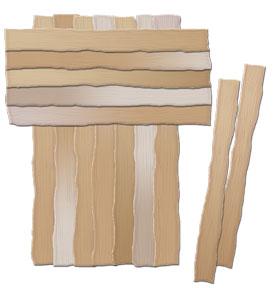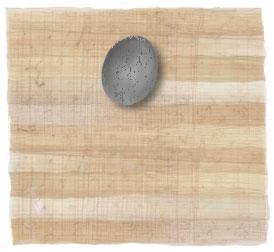Papyrus

Papyrus is made from thin strips of the pithy center of the papyrus plant. The strips are placed in an overlapping, cross-laminated structure, then pressed or beaten to bond and dry them into sheets. If the papyrus stalk is freshly cut, the strips will adhere naturally thanks to the sap, but if it is dry, a paste adhesive is used. Some surface sizing is done with a rice starch paste, then the surface is rubbed with pumice stone.

Papyrus is quite weak when subjected to any stress and can break easily. Papyrus was used in rolls and in the codex form, with codices often formed by stab sewing along the back edge or sewing the leaves together in small gatherings.
Identification
Papyrus can be identified by examining a sheet over a light table or by holding it up to the light. The cross-laminated structure of the pith strips becomes easily apparent. Papyrus must be dated in combination with contextual clues and in reference to known examples. In many cases old papyrus has deteriorated into small fragments and so must be handled with care.
Condition Concerns
Ancient papyrus may be desiccated and brittle as well as discolored. Papyrus may be naturally acidic because of its high lignin content. Lignin also causes papyrus to darken when exposed to light. Papyrus may have a strong tendency to curl at the edges unless restrained, and the edges fray easily.
In the 19th and early 20th centuries papyrus was often stored, handled, and displayed by taping or gluing it to cloth, cardboard, cellulose nitrate, or hardened gelatin sheets or—most commonly—by sandwiching it between pieces of glass sealed around the edge with paper tape. Acids can migrate into the papyrus from these materials.